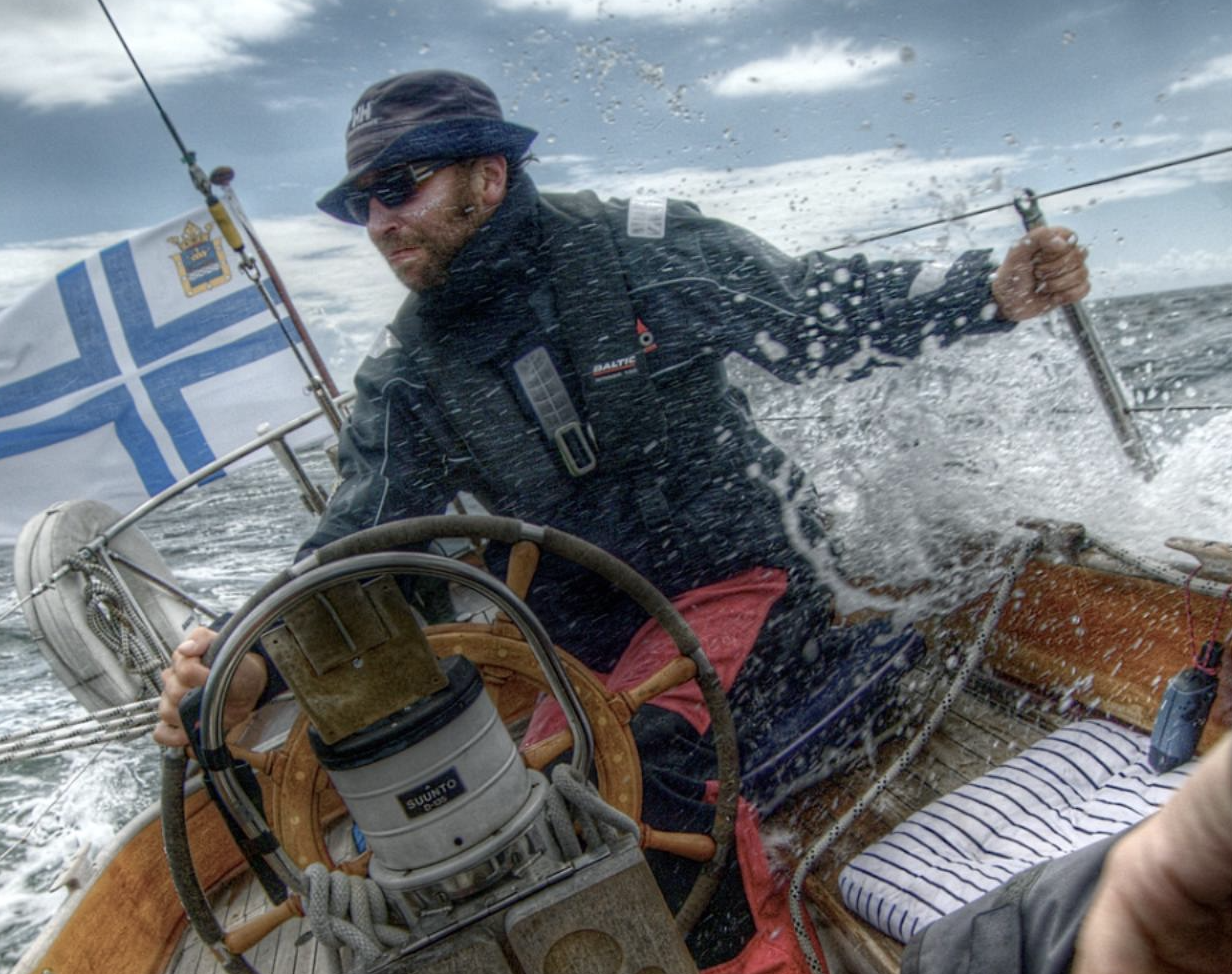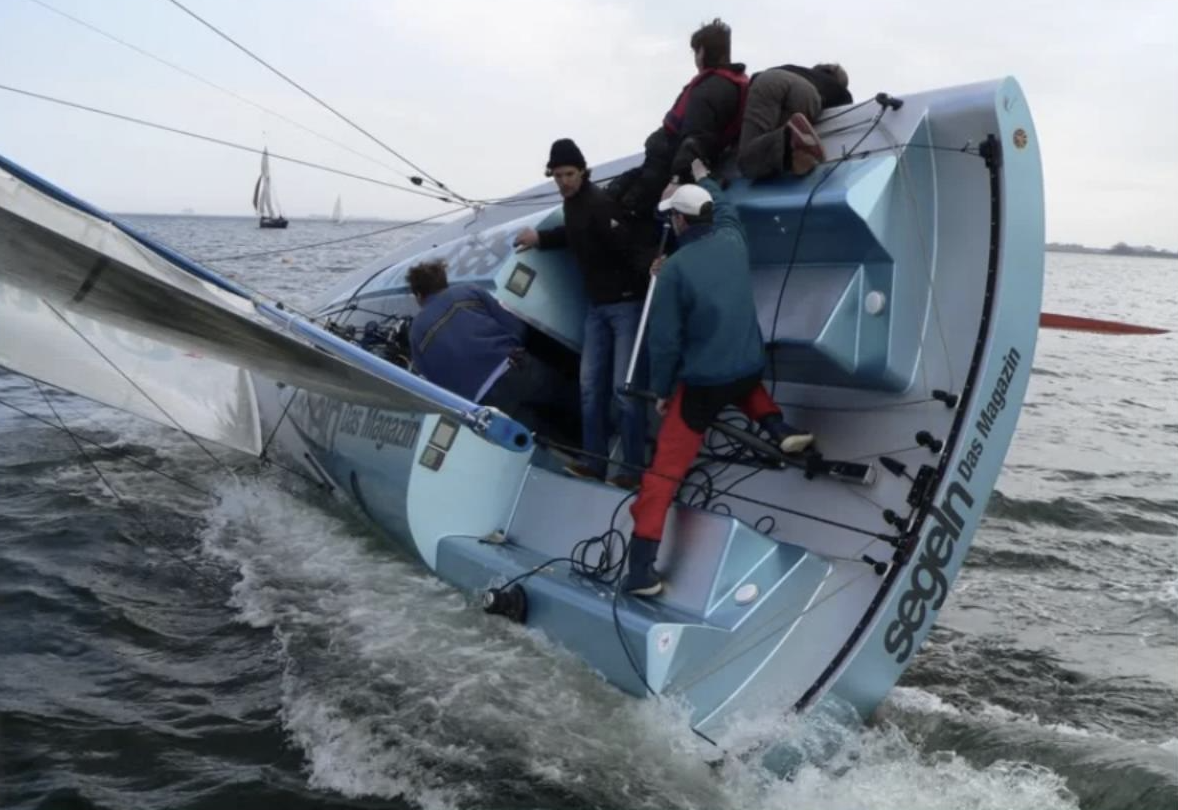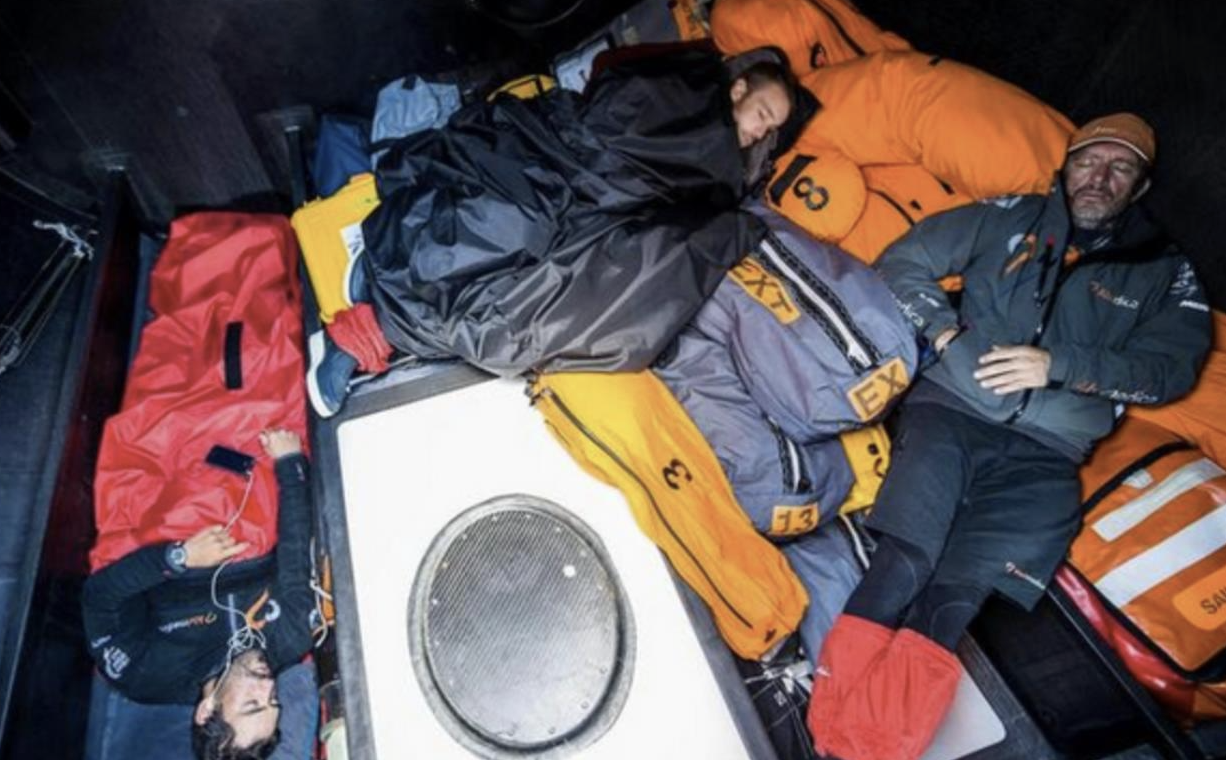Sailing is Silly
Tom Fexas (1941-2006) was one of the most influential yacht designers of the last quarter of the 20th century. With the narrow Wall Street commuters that were built in the 1920s and '30s always on the back of his mind, he wanted to design boats that were at once fast, comfortable, seaworthy and economical to operate. Over the years, he and his firm designed over 1,000 yachts for some of the most prestigious boat builders in the world, including Choey Lee, Palmer Johnson, Grand Banks, Mikelson Yachts, Burger, Abeking & Rasmussen and many others.
Even though toward the end of his career he only designed megayachts and superyachts, including the remarkably influential PJ "Time" in 1987, he is best remembered for his first major vessel in 1978 -- Midnight Lace -- which became a series of 44-52-footers. They were light, narrow, and fast with relatively small engines. He was also influential in the boating community because of the monthly column he wrote for Power and Motoryacht, which began in its very first issue in January 1985. The article's title is "Sailing is Silly" that is reprinted below.
---------------------------------
Sailing is Silly (or, sooner or later one must face the fact that a so-called “Sailboat” is merely a Power Boat with a funny cabin and masts)
As a designer of power vessels for many years, I have dealt with many types of people. They all have different ideas concerning their ultimate boat but there is a common thread in their thinking: they believe that a proper boat is one which has sturdy engines thrumming beneath their feet. Engines that can be relied upon to get them out of tough situations and deliver their yachts to their destination at a pre-determined time.
But every once in a while, strange types of yachtsmen are encountered. They seem to revel in rope burns and salt water running down their necks. They speak in a strange language using words like “clew” and “weather helm”. They speak ill of us powerboaters and oftentimes wear bright green pants (with little flags on them) and funny hats. They usually stand at an angle somewhat off perpendicular.
These fellows are called “sailors” and it is to this select group of yachtsmen that I have this to say: C’MON GUYS, COME CLEAN AND ADMIT IT! SAILING IS A RATHER SILLY EXERCISE AND MOST SAILBOATS ARE REALLY ONLY POWERBOATS WITH FUNNY LOOKING CABINS AND MASTS! (That should get their attention.) After this blasphemy, I will document with facts why this is so.
At first glance, the concept is intriguing – a vessel that moves across the sea powered by beautiful, quiet, clean, (and importantly) free air. Sounds good! No fuel expense, no fumes, no noise, no pollution. Sounds really good!
But wait! There are some drawbacks. See, the boat doesn’t directly move when the wind blows. No, you must first hang funny shaped pieces of cloth on tall sticks. Because these sticks are so tall, they must be supported by a complicated web of wires. The pieces of cloth must be controlled through a system of pulleys by a maze of strings attached to them. Sounds complicated, doesn’t it?
But wait! There’s more. Because of these cloths strung up so high on the sticks, the vessel must be balanced by a heavy mass of weight placed down low in the hull. Because the hull will slide sideways when the wind pushes on the cloths, a strange, big, flat appendage must be fitted below the hull greatly increasing draft and restricting areas the boat may be cruised in.
Sometimes, the heavy weight is attached to the appendage, thereby creating a great strain on the hull. The deep hull form resulting requires that the inhabitants of this vessel must live, eat, and sleep in a dark, narrow cave in the water that is much wider on top than it is on the bottom.
There’s still more! This cave in the water tilts at varying angles when underway: sometimes to the left, sometimes to the right. The inhabitants must learn to dwell on the low side of the cave, wedged into corners or hung by straps. Food must be served on a table that swivels and getting around is easier if one leg is longer than the other. Because the cave floats so low, water is constantly finding its way down into it. Little holes cut in the sides of the cave admit small shafts of light.
Once on deck, things aren’t so simple either for it is nearly impossible to walk from stern to bow without choking yourself on one of the strings or wires. Additionally, there are funny contraptions placed in your path on deck which will trip you, and toss you overboard.
Well, that’s about it – except for one more little drawback: due to the whimsical wind, you never know when (or if) you will reach your destination, and more importantly, YOU CAN’T POINT THE DAMN BOAT IN THE DIRECTION YOU WOULD LIKE TO TRAVEL!
Some contend that a sailboat is non-polluting and silent. I guess this is so, but consider: a big stick violently swinging in the breeze from side to side just above your head might be considered the ultimate in airborne pollution when it smacks you on the cranium. Silent? Ever hear those wires and strings slapping against those sticks in an otherwise quiet harbor?
But sailing is fun, isn’t it? Well, if one is to perform this action called “sailing”, one must rise early from his cave for there is much to do before one can actually “sail”. Big bags must be dragged out on deck and the large cloths must be pulled out of them to be strung up on the sticks. This is only accomplished by a great amount of cranking, pulling, and general scurrying about the decks. After a day of “sailing”, the now wet cloths must be taken off the sticks, stuffed in the bags, and dragged back down into the cave.
But what about the benefits? Well, there’s good news and bad news. The good news is that, yes, if you’re willing to put up with the above-mentioned complications, you can, indeed, move across the water for free – except if there’s no wind.
The bad news is that to alleviate this little problem, a unique solution was arrived at. INSTALL AN ENGINE. An engine? Yes, friends, when things get hairy or when anchoring, or when there’s no wind, or during docking/undocking, the engine is simply switched on. What a great idea! Which seems to bring us back to square one.
If engines are to be installed anyhow, why go through the expense of all those cloths, sticks, wires, strings, cranks, and pulleys? And doesn’t this piece of machinery below decks render a “sailboat” simply a power boat with funny-looking cabins and masts? C’mon guys, trade in those bright green pants (with little flags on them) for a pair of greasy coveralls and admit it. SAILING IS SILLY! Case closed.
(Reprinted with permission of Regina Fexas.)
If you would like to read more of Tom's pearls of wisdom, tune in next Friday -- "Fexas Friday."
Better yet, why not get a full dose of infectious Fexas whenever you need it -- and buy one of the volumes below. Better yet, why not buy all of them -- we call them the "Fexas Five." They will provide many evenings of fun reading (better than Netflix), and you'll make the widow Regina very happy knowing that Tom will live on with you the way most of us remember him.
Order 1, 2 or "The Fexas Five" --
To find the "Fexas Five" on Amazon, click here...




